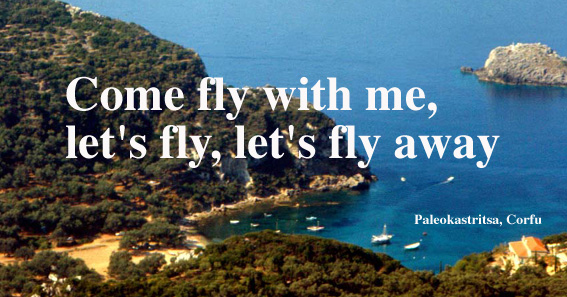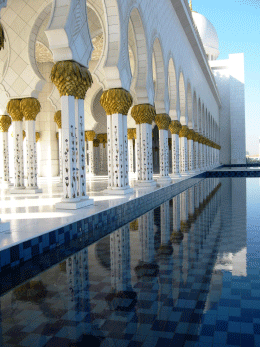
Iran's Caviar Coast
...a joyous and spontaneous moment:
a group of Kurdish youths, arm in arm, dancing to music
from their car parked close by.
from their car parked close by.
Caviar Coast? Well, it used to be. But those salty black pearls from the Caspian Sea's sturgeon are in short supply these days, as overfishing depletes its numbers. There are still fishing boats bobbing about in North Iran's major port, Anzali, but these days it's Russian freighters that see most of the action, as they arrive to dock and unload steel reinforcing rods for Iran's expanding construction industry. You can see this in Anzali itself as houses disappear and apartment buildings rise in their place.

I'm in Iran, visiting friends. I'm here at an inauspicious time, right after the post-election rioting that made Tehran, temporarily, a dangerous place to be. And the weather is hot. It is mid-August. In the central part of the country, it's a dry heat - but keep in the shade if you can. In the north, on the coast, the humidity can be enervating
It's 8pm in Anzali, a few days after I come to the coast. I switch on the TV. Every channel lets me know that Ramadan has arrived. Bearded, turbaned clerics with grey faces recite the Koran and take part in Islamic ritual. The timing is precise: as the sun sinks behind the Western horizon, families can at last enjoy an evening meal, after a day of fasting. Ramadan is more closely observed in the great cities further south - Shiraz and Esfehan in particular - and lasts for one month. Each day, the devout must rise before dawn to eat, go without food all day and break their fast at magrib (sunset) prayer time with a meal called iftar. Sunni or (in Iran) Shia may continue to eat and drink after the sun has set until the next morning's fajr prayer call. The fast is an act of personal worship in which Muslims seek a raised awareness of closeness to Allah.
Anzali is a bustling city, even more bustling on Saturday when its open-air market welcomes locals to stalls offering fresh local produce, chickens, ducks, fish, herbs and spices. Fabrics on sale float from high hangers in the breeze. Everything is available, with the Made-in-China label ubiquitous, as it is everywhere else these days. And it is really difficult to get from one part of the city to another, as cars make the journey an agonizing bumper-to-bumper experience. Oh, well. There's a lot to look at while you wait. Including huge billboards displaying portraits of local soldiers lost in the Iran-Iraq War. No matter where you go in Iran, these memorials are a permanent reminder of sacrifice.
The Caspian is a huge inland sea, the largest enclosed body of water on earth with a surface area of 371,000 square kilometres. It has no outflows and is bounded by northern Iran, southern Russia, western Kazakhstan and Turkmenistan, and eastern Azerbaijan. It is very deep and slightly salty, about a third of the saltiness found in seawater. Its name derives most probably from ancient Sanskrit, Kashyapas.
The Caspian I get to see up close and personal is about five minutes from my friends' house. I see a stretch of grey sand, and, from time to time, small waves came crashing in. Other times, it is quiet and flat. The water doesn't seem very clean, but locals and visitors who come in droves from the dry south certainly have fun, emerging from their little tents to paddle and splash about until a zealous official with a whistle calls them from the water. There are rip tides here; a local youth was pulled out by such a rip and drowned during my stay. And if you look out, far out, you'll see lots of tiny black specks on the horizon: those Russian freighters making their approach to the Anzali docks.
Turn around from the sea and there, behind you, are the mountains. The Alborz Massif is not far from Anzali, about an hour's drive, and it rises to about 1000m or so, even higher in some places. We drive one day up into the mountains, wild and fresh and green, jungle-dense sometimes or open and rural further on. Around one bend, we experience a joyous and spontaneous moment: a group of Kurdish youths, arm in arm, dancing to music from their car parked close by.
Kurdish boys dance by their car
Ten minutes further on, we stop for kebabs and fresh-baked bread. Smoke drifts up from burning barbecues, lambs are slaughtered tactfully out of sight and then hung on display. Cars arrive, filled with hungry travelers. More cars arrive. Business is brisk and lots of riales change hands. The fresh lamb kebabs are served to us on long skewers, sizzling, delectable.


Another day, another road, to a different part of the Alborz range. We're in Talesh country. The people here are ethnic Talesh, mountain people, who raise sheep for wool and meat. They speak Talesh. They also speak Gilicki, the language of the North. And they also speak Farsi, the major language of Iran. We're off to visit a fabled village, Masouleh, a thousand years old and over a thousand metres above sea level. It rises up the side of a timbered mountain and a plunging waterfall nearby feeds a gurgling stream that passes the village.
When we arrive, mist is moving in, blanketing the surrounding slopes. Masouleh is heritage-listed and much-visited because its architecture is unique. Its two-storey houses are coated with yellow clay (so you can see them in the mist) and not only have they been built into the mountain but are interconnected, one on top of another. Courtyards and roofs both serve as pedestrian areas, linked by stairs. You can't drive a car in Masouleh. You just park in a special area and walk. Up and up and up. Surrounding a central plaza are places to eat, shops and bakeries. I came away with hand-knitted bed socks, still smelling of freshly clipped mountain wool.
Further along the coast, to the east, I come to stay in the city of Chalus (or Chaloos) more up-market than Anzali and the city that links directly, via an amazing mountain road, to Tehran. One day, we visit Lake Valasht, taking the Tehran road and turning off onto a side road after about half an hour. The journey offers us spectacular views and the lake is blue and beautiful, but like many parts of the north, strewn with garbage left over by visitors. Iranians who travel within their own country really do need to clean up their act.
Chalus also has many reminders of the Shah regime. Estates left by fleeing military officers and government officials are here, their gardens overgrown, the houses mouldering. The estate of the Shah's last wife, Empress Farah Diba, is here, too - a lonely, sadly shuttered mansion surrounded by palms and lush gardens. She can never return.
And Chalus has a great ride to the top of the mountain which backs the city. I get into a cable car and off we go, higher and higher, as the city shrinks beneath us, surrounded by rice farms, and the Caspian shimmers in the distance. One thousand metres up, the heat and humidity disappear. It's noon, or thereabouts, and from loudspeakers set high and hidden in leafy green foliage, the sound of the Call to Prayer echoes and re-echoes off huge grey granite boulders, edged with moss. It's cool, shaded, serene. And even better as a cloud descends and mist rolls in.
This is Iran's North - the Caspian region that stretches west to east. The caviar has all but disappeared but to be here is still an indulgence, to be fondly remembered from afar.






























.jpg)







